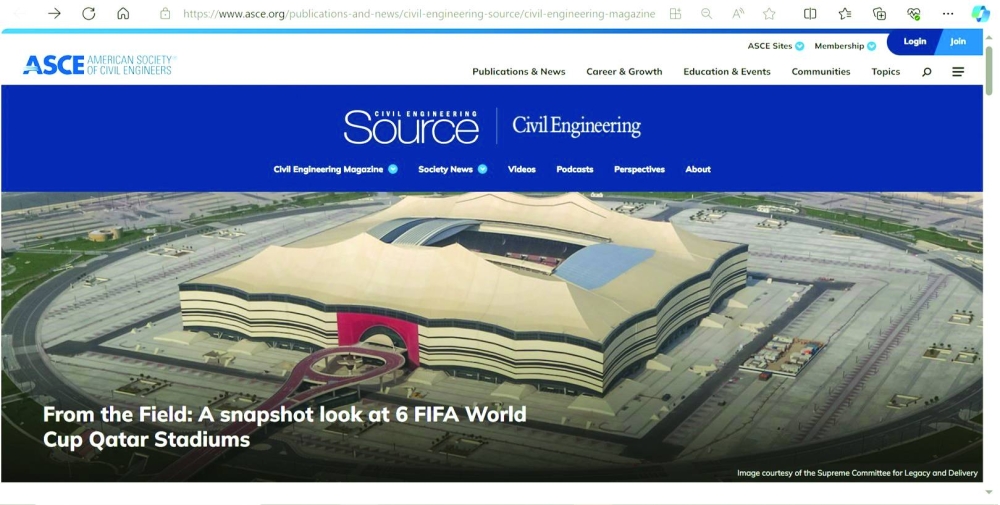Research carried out by Dr Nasser al-Nuaimi, associate professor of civil engineering and vice-president for research and graduate studies at Qatar University (QU), and his colleague, Hilal al-Kuwari, who was the technical director of the 2022 World Cup stadiums, has adorned the home page of the American Society of Civil Engineers (ASCE) website.
The research documented some of the civil engineering design and construction experience of Qatar, the first Arab country in the Middle East to obtain the right to host a FIFA World Cup, in November and December 2022.
The research shed light on the history of football and its development in Qatar, from its early beginnings as a game played by workers in oil companies in 1948, through to the development of the first football club in the country, the establishment of the Qatar Federation and obtaining membership in FIFA, Qatar’s participation in several international tournaments, and eventually winning the hosting rights of the Qatar 2022 World Cup.
The article provided details of the design and construction aspects of six stadiums for the World Cup.
The ASCE is currently preparing to publish a detailed report on Al Janoub and Lusail Stadiums in a feature article in the society’s official periodical, which reflects the quality of the work undertaken and the strong desire of the ASCE to disseminate the work to its readers all over the world.
The research touched on the highly innovative engineering designs that distinguished each one of the stadiums.
The article presented information related to the footprint and capacity of each stadium in addition to the stadium's distinctive features, including the stadium facade structure, the stadium bowl, and the roof structures, which were all meticulously designed to take into account climate change factors such as storms and severe temperature changes.
The research highlighted the success of Qatar in organising the 64 matches of the World Cup, usually held in multiple host cities that are separated by hundreds, if not thousands, of kilometres, in one compact region for the first time in history.
The two furthest stadiums are only 55km apart, and the distance between the two closest stadiums is less than 10km.
Dr al-Nuaimi stated: “Qatar made sports history in 2010 when it won the bid to host the World Cup, and it demonstrated the country’s excellence in organising the largest sporting event in the world when it succeeded in 2022 by all standards.”
“As an engineer, I added to these successes, the excellence in the engineering design of the stadiums that hosted the tournament, and how the spectator experience was augmented by careful analyses of all the details, including the stadium site locations, the sightlines from the stands, crowd management, the air conditioning systems, the solar shading, and many other detailed simulations all prepared to serve the public,” he said.

